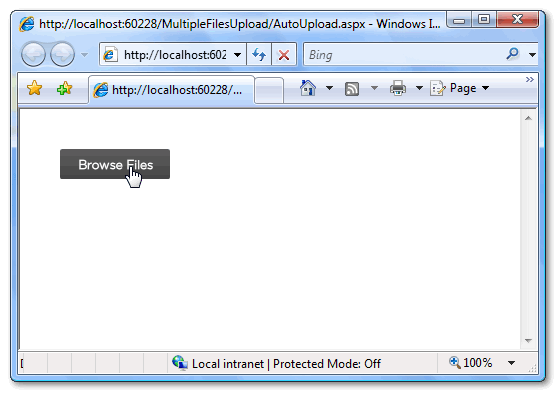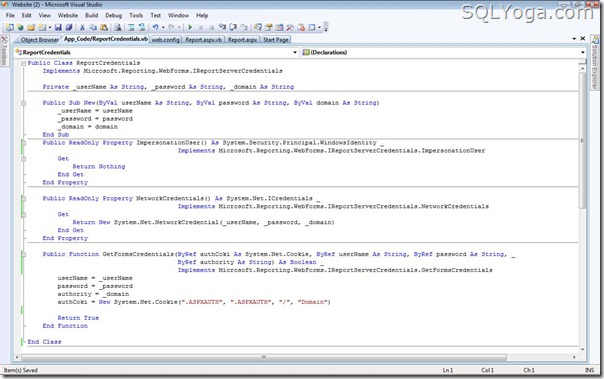CREATE PROC [dbo].[sp_generate_inserts] (@table_name VARCHAR(776),-- The table/view for which the INSERT statements will be generated using the existing data
@Where VARCHAR(max)='',
@target_table VARCHAR(776) = NULL,-- Use this parameter to specify a different table name into which the data will be inserted
@include_column_list BIT = 1,-- Use this parameter to include/ommit column list in the generated INSERT statement
@from VARCHAR(800) = NULL,-- Use this parameter to filter the rows based on a filter condition (using WHERE)
@include_timestamp BIT = 0,-- Specify 1 for this parameter, if you want to include the TIMESTAMP/ROWVERSION column's data in the INSERT statement
@debug_mode BIT = 0,-- If @debug_mode is set to 1, the SQL statements constructed by this procedure will be printed for later examination
@owner VARCHAR(64) = NULL,-- Use this parameter if you are not the owner of the table
@ommit_images BIT = 0,-- Use this parameter to generate INSERT statements by omitting the 'image' columns
@ommit_identity BIT = 0,-- Use this parameter to ommit the identity columns
@top INT = NULL,-- Use this parameter to generate INSERT statements only for the TOP n rows
@cols_to_include VARCHAR(8000) = NULL,-- List of columns to be included in the INSERT statement
@cols_to_exclude VARCHAR(8000) = NULL,-- List of columns to be excluded from the INSERT statement
@disable_constraints BIT = 0,-- When 1, disables foreign key constraints and enables them after the INSERT statements
@ommit_computed_cols BIT = 0 -- When 1, computed columns will not be included in the INSERT statement
)
AS
BEGIN
SET NOCOUNT ON
--Making sure user only uses either @cols_to_include or @cols_to_exclude
IF ( ( @cols_to_include IS NOT NULL )
AND ( @cols_to_exclude IS NOT NULL ) )
BEGIN
RAISERROR('Use either @cols_to_include or @cols_to_exclude. Do not use both the parameters at once',16,1)
RETURN -1 --Failure. Reason: Both @cols_to_include and @cols_to_exclude parameters are specified
END
--Making sure the @cols_to_include and @cols_to_exclude parameters are receiving values in proper format
IF ( ( @cols_to_include IS NOT NULL )
AND ( Patindex('''%''', @cols_to_include) = 0 ) )
BEGIN
RAISERROR('Invalid use of @cols_to_include property',16,1)
PRINT 'Specify column names surrounded by single quotes and separated by commas'
PRINT 'Eg: EXEC sp_generate_inserts titles, @cols_to_include = "''title_id'',''title''"'
RETURN -1 --Failure. Reason: Invalid use of @cols_to_include property
END
IF ( ( @cols_to_exclude IS NOT NULL )
AND ( Patindex('''%''', @cols_to_exclude) = 0 ) )
BEGIN
RAISERROR('Invalid use of @cols_to_exclude property',16,1)
PRINT 'Specify column names surrounded by single quotes and separated by commas'
PRINT 'Eg: EXEC sp_generate_inserts titles, @cols_to_exclude = "''title_id'',''title''"'
RETURN -1 --Failure. Reason: Invalid use of @cols_to_exclude property
END
--Checking to see if the database name is specified along wih the table name
--Your database context should be local to the table for which you want to generate INSERT statements
--specifying the database name is not allowed
IF ( Parsename(@table_name, 3) ) IS NOT NULL
BEGIN
RAISERROR('Do not specify the database name. Be in the required database and just specify the table name.',16,1)
RETURN -1 --Failure. Reason: Database name is specified along with the table name, which is not allowed
END
--Checking for the existence of 'user table' or 'view'
--This procedure is not written to work on system tables
--To script the data in system tables, just create a view on the system tables and script the view instead
IF @owner IS NULL
BEGIN
IF ( ( Object_id(@table_name, 'U') IS NULL )
AND ( Object_id(@table_name, 'V') IS NULL ) )
BEGIN
RAISERROR('User table or view not found.',16,1)
PRINT 'You may see this error, if you are not the owner of this table or view. In that case use @owner parameter to specify the owner name.'
PRINT 'Make sure you have SELECT permission on that table or view.'
RETURN -1 --Failure. Reason: There is no user table or view with this name
END
END
ELSE
BEGIN
IF NOT EXISTS (SELECT 1
FROM INFORMATION_SCHEMA.TABLES
WHERE TABLE_NAME = @table_name
AND ( TABLE_TYPE = 'BASE TABLE'
OR TABLE_TYPE = 'VIEW' )
AND TABLE_SCHEMA = @owner)
BEGIN
RAISERROR('User table or view not found.',16,1)
PRINT 'You may see this error, if you are not the owner of this table. In that case use @owner parameter to specify the owner name.'
PRINT 'Make sure you have SELECT permission on that table or view.'
RETURN -1 --Failure. Reason: There is no user table or view with this name
END
END
--Variable declarations
DECLARE @Column_ID INT,
@Column_List VARCHAR(max),
@Column_Name VARCHAR(128),
@Start_Insert VARCHAR(max),
@Data_Type VARCHAR(128),
@Actual_Values VARCHAR(max),--This is the string that will be finally executed to generate INSERT statements
@IDN VARCHAR(128) --Will contain the IDENTITY column's name in the table
--Variable Initialization
SET @IDN = ''
SET @Column_ID = 0
SET @Column_Name = ''
SET @Column_List = ''
SET @Actual_Values = ''
IF @owner IS NULL
BEGIN
SET @Start_Insert = 'INSERT INTO ' + '[' + Rtrim(COALESCE(@target_table, @table_name)) + ']'
END
ELSE
BEGIN
SET @Start_Insert = 'INSERT ' + '[' + Ltrim(Rtrim(@owner)) + '].' + '[' + Rtrim(COALESCE(@target_table, @table_name)) + ']'
END
--To get the first column's ID
SELECT @Column_ID = Min(ORDINAL_POSITION)
FROM INFORMATION_SCHEMA.COLUMNS (NOLOCK)
WHERE TABLE_NAME = @table_name
AND ( @owner IS NULL
OR TABLE_SCHEMA = @owner )
--Loop through all the columns of the table, to get the column names and their data types
WHILE @Column_ID IS NOT NULL
BEGIN
SELECT @Column_Name = Quotename(COLUMN_NAME)
,@Data_Type = DATA_TYPE
FROM INFORMATION_SCHEMA.COLUMNS (NOLOCK)
WHERE ORDINAL_POSITION = @Column_ID
AND TABLE_NAME = @table_name
AND ( @owner IS NULL
OR TABLE_SCHEMA = @owner )
IF @cols_to_include IS NOT NULL --Selecting only user specified columns
BEGIN
IF Charindex('''' + Substring(@Column_Name, 2, Len(@Column_Name)-2) + '''', @cols_to_include) = 0
BEGIN
GOTO SKIP_LOOP
END
END
IF @cols_to_exclude IS NOT NULL --Selecting only user specified columns
BEGIN
IF Charindex('''' + Substring(@Column_Name, 2, Len(@Column_Name)-2) + '''', @cols_to_exclude) <> 0
BEGIN
GOTO SKIP_LOOP
END
END
--Making sure to output SET IDENTITY_INSERT ON/OFF in case the table has an IDENTITY column
IF (SELECT COLUMNPROPERTY(Object_id(Quotename(COALESCE(@owner, User_name())) + '.' + @table_name), Substring(@Column_Name, 2, Len(@Column_Name) - 2), 'IsIdentity')) = 1
BEGIN
IF @ommit_identity = 0 --Determing whether to include or exclude the IDENTITY column
SET @IDN = @Column_Name
ELSE
GOTO SKIP_LOOP
END
--Making sure whether to output computed columns or not
IF @ommit_computed_cols = 1
BEGIN
IF (SELECT COLUMNPROPERTY(Object_id(Quotename(COALESCE(@owner, User_name())) + '.' + @table_name), Substring(@Column_Name, 2, Len(@Column_Name) - 2), 'IsComputed')) = 1
BEGIN
GOTO SKIP_LOOP
END
END
--Tables with columns of IMAGE data type are not supported for obvious reasons
IF( @Data_Type IN ( 'image' ) )
BEGIN
IF ( @ommit_images = 0 )
BEGIN
RAISERROR('Tables with image columns are not supported.',16,1)
PRINT 'Use @ommit_images = 1 parameter to generate INSERTs for the rest of the columns.'
PRINT 'DO NOT ommit Column List in the INSERT statements. If you ommit column list using @include_column_list=0, the generated INSERTs will fail.'
RETURN -1 --Failure. Reason: There is a column with image data type
END
ELSE
BEGIN
GOTO SKIP_LOOP
END
END
--Determining the data type of the column and depending on the data type, the VALUES part of
--the INSERT statement is generated. Care is taken to handle columns with NULL values. Also
--making sure, not to lose any data from flot, real, money, smallmomey, datetime columns
SET @Actual_Values = @Actual_Values + CASE WHEN @Data_Type IN ('char', 'varchar', 'nchar', 'nvarchar') THEN 'COALESCE('''''''' + REPLACE(RTRIM(' + @Column_Name + '),'''''''','''''''''''')+'''''''',''NULL'')' WHEN @Data_Type IN ('datetime', 'smalldatetime') THEN 'COALESCE('''''''' + RTRIM(CONVERT(char,' + @Column_Name + ',109))+'''''''',''NULL'')' WHEN @Data_Type IN ('uniqueidentifier') THEN 'COALESCE('''''''' + REPLACE(CONVERT(char(255),RTRIM(' + @Column_Name + ')),'''''''','''''''''''')+'''''''',''NULL'')' WHEN @Data_Type IN ('text', 'ntext') THEN 'COALESCE('''''''' + REPLACE(CONVERT(char(8000),' + @Column_Name + '),'''''''','''''''''''')+'''''''',''NULL'')' WHEN @Data_Type IN ('binary', 'varbinary') THEN 'COALESCE(RTRIM(CONVERT(char,' + 'CONVERT(int,' + @Column_Name + '))),''NULL'')' WHEN @Data_Type IN ('timestamp', 'rowversion') THEN CASE WHEN @include_timestamp = 0 THEN '''DEFAULT''' ELSE 'COALESCE(RTRIM(CONVERT(char,' + 'CONVERT(int,' + @Column_Name + '))),''NULL'')' END
WHEN
@Data_Type IN ('float',
'real', 'money', 'smallmoney') THEN 'COALESCE(LTRIM(RTRIM(' + 'CONVERT(char, ' + @Column_Name + ',2)' + ')),''NULL'')' ELSE 'COALESCE(LTRIM(RTRIM(' + 'CONVERT(char, ' + @Column_Name + ')' + ')),''NULL'')' END + '+' + ''',''' + ' + '
--Generating the column list for the INSERT statement
SET @Column_List = @Column_List + @Column_Name + ','
SKIP_LOOP: --The label used in GOTO
SELECT @Column_ID = Min(ORDINAL_POSITION)
FROM INFORMATION_SCHEMA.COLUMNS (NOLOCK)
WHERE TABLE_NAME = @table_name
AND ORDINAL_POSITION > @Column_ID
AND ( @owner IS NULL
OR TABLE_SCHEMA = @owner )
--Loop ends here!
END
--To get rid of the extra characters that got concatenated during the last run through the loop
SET @Column_List = LEFT(@Column_List, Len(@Column_List) - 1)
SET @Actual_Values = LEFT(@Actual_Values, Len(@Actual_Values) - 6)
IF Ltrim(@Column_List) = ''
BEGIN
RAISERROR('No columns to select. There should at least be one column to generate the output',16,1)
RETURN -1 --Failure. Reason: Looks like all the columns are ommitted using the @cols_to_exclude parameter
END
--Forming the final string that will be executed, to output the INSERT statements
IF ( @include_column_list <> 0 )
BEGIN
SET @Actual_Values = 'SELECT ' + CASE WHEN @top IS NULL OR @top < 0 THEN '' ELSE ' TOP ' + Ltrim(Str(@top)) + ' ' END + '''' + Rtrim(@Start_Insert) + ' ''+' + '''(' + Rtrim(@Column_List) + '''+' + ''')''' + ' +''VALUES(''+ ' + @Actual_Values + '+'')''' + ' ' + COALESCE(@from, ' FROM ' + CASE WHEN @owner IS NULL THEN '' ELSE '[' + Ltrim(Rtrim(@owner)) + '].' END + '[' + Rtrim(@table_name) + '] (NOLOCK) '+@where)
END
ELSE IF ( @include_column_list = 0 )
BEGIN
SET @Actual_Values = 'SELECT ' + CASE WHEN @top IS NULL OR @top < 0 THEN '' ELSE ' TOP ' + Ltrim(Str(@top)) + ' ' END + '''' + Rtrim(@Start_Insert) + ' '' +''VALUES(''+ ' + @Actual_Values + '+'')''' + ' ' + COALESCE(@from, ' FROM ' + CASE WHEN @owner IS NULL THEN '' ELSE '[' + Ltrim(Rtrim(@owner)) + '].' END + '[' + Rtrim(@table_name) + '] (NOLOCK) '+@where)
END
--Determining whether to ouput any debug information
IF @debug_mode = 1
BEGIN
PRINT '/*****START OF DEBUG INFORMATION*****'
PRINT 'Beginning of the INSERT statement:'
PRINT @Start_Insert
PRINT ''
PRINT 'The column list:'
PRINT @Column_List
PRINT ''
PRINT 'The SELECT statement executed to generate the INSERTs'
PRINT @Actual_Values
PRINT ''
PRINT '*****END OF DEBUG INFORMATION*****/'
PRINT ''
END
PRINT '--INSERTs generated by ''sp_generate_inserts'' stored procedure written by Vyas'
PRINT '--Build number: 22'
PRINT '--Problems/Suggestions? Contact Vyas @ vyaskn@hotmail.com'
PRINT '--http://vyaskn.tripod.com'
PRINT ''
PRINT 'SET NOCOUNT ON'
PRINT ''
--Determining whether to print IDENTITY_INSERT or not
IF ( @IDN <> '' )
BEGIN
PRINT 'SET IDENTITY_INSERT ' + Quotename(COALESCE(@owner, User_name())) + '.' + Quotename(@table_name) + ' ON'
PRINT 'GO'
PRINT ''
END
IF @disable_constraints = 1
AND ( Object_id(Quotename(COALESCE(@owner, User_name())) + '.' + @table_name, 'U') IS NOT NULL )
BEGIN
IF @owner IS NULL
BEGIN
SELECT 'ALTER TABLE ' + Quotename(COALESCE(@target_table, @table_name)) + ' NOCHECK CONSTRAINT ALL' AS '--Code to disable constraints temporarily'
END
ELSE
BEGIN
SELECT 'ALTER TABLE ' + Quotename(@owner) + '.' + Quotename(COALESCE(@target_table, @table_name)) + ' NOCHECK CONSTRAINT ALL' AS '--Code to disable constraints temporarily'
END
PRINT 'GO'
END
PRINT ''
PRINT 'PRINT ''Inserting values into ' + '[' + Rtrim(COALESCE(@target_table, @table_name)) + ']' + ''''
--All the hard work pays off here!!! You'll get your INSERT statements, when the next line executes!
EXEC (@Actual_Values)
--PRINT @Actual_Values
PRINT 'PRINT ''Done'''
PRINT ''
IF @disable_constraints = 1
AND ( Object_id(Quotename(COALESCE(@owner, User_name())) + '.' + @table_name, 'U') IS NOT NULL )
BEGIN
IF @owner IS NULL
BEGIN
SELECT 'ALTER TABLE ' + Quotename(COALESCE(@target_table, @table_name)) + ' CHECK CONSTRAINT ALL' AS '--Code to enable the previously disabled constraints'
END
ELSE
BEGIN
SELECT 'ALTER TABLE ' + Quotename(@owner) + '.' + Quotename(COALESCE(@target_table, @table_name)) + ' CHECK CONSTRAINT ALL' AS '--Code to enable the previously disabled constraints'
END
PRINT 'GO'
END
PRINT ''
IF ( @IDN <> '' )
BEGIN
PRINT 'SET IDENTITY_INSERT ' + Quotename(COALESCE(@owner, User_name())) + '.' + Quotename(@table_name) + ' OFF'
PRINT 'GO'
END
PRINT 'SET NOCOUNT OFF'
SET NOCOUNT OFF
RETURN 0 --Success. We are done!
END


















